Things in the current world tend to change at a breakneck speed due to the amazing technical developments that occur sometimes. Business environments and consumer requirements also change, which forces organizations to reevaluate how they manage their operations. Furthermore, falling behind your rivals is frequently the result of not being able to adjust to changes. In this article, we read comprehensively about Agile SDLC.
This is particularly valid when discussing IT firms. Software development teams aim to release high-quality products as soon as possible to be competitive and relevant. They also work well together to accomplish their objectives by promptly adapting to changes in the market. The DeepInsipre team is a living example of how the Agile software development methodologies—which were created especially for rapid software development—make this fairly attainable. We have a lot to say about agile SDLC software development since we are passionate advocates of the technique. Now let’s get to work.
What is the Agile Model?
A group of software professionals who were dissatisfied with laborious, documentation-driven software development techniques created the Agile Manifesto in 2001. The Agile Manifesto lays forth the fundamental beliefs and guidelines for Agile software development; it does not specify any particular techniques.
A variety of strategies and management techniques are built upon the Agile principle. Agile techniques are built on iterative development, where projects are divided into smaller units called sprints, and the number, length, and scope of each sprint are predefined. Usually lasting between one and four weeks, each iteration entails a team going through the whole software development lifecycle.
How and when should I apply Agile?
Agile SDLC development lifecycles are not appropriate for use in projects that need to be implemented in compliance with very specific requirements, like legal or regulatory ones, because one of their goals is to constantly adapt the product development process to changing clients’ or market needs. When such criteria are present, the ultimate solution’s delivery schedule and implementation format are typically extremely apparent. This implies that the project executor may incur penalties and other damages as a result of their noncompliance.
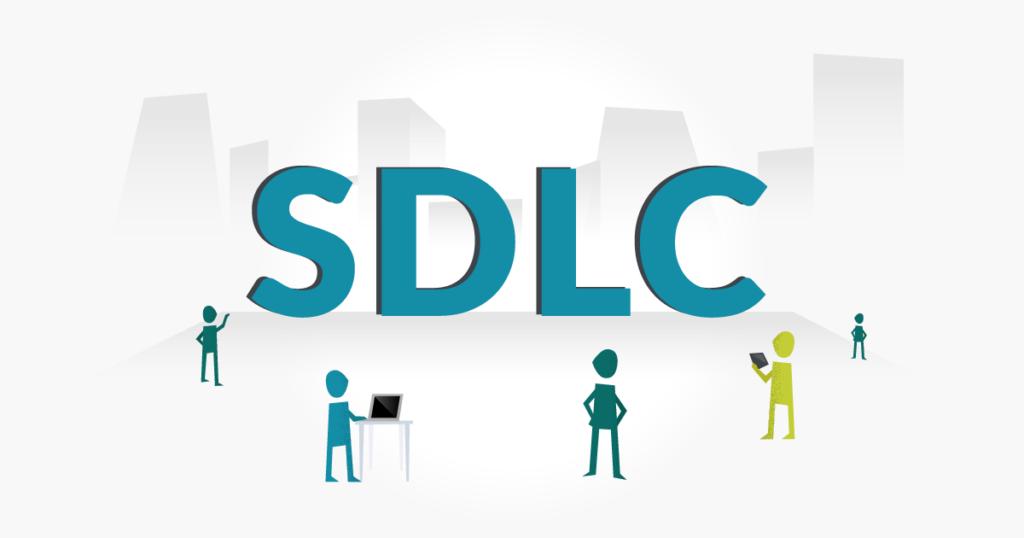
Agile SDLC Process of Workflow
Iterations, which are the building blocks of the Agile SDLC, usually last two to four weeks. The following five steps are often included in the workflow of Agile processes:
- Determining the needs
- Product creation
- Software evaluation
- Delivery of iterations
- Comments
Numerous iterations may be included at every stage of the Agile development lifecycle, as developers sometimes need to go through each step multiple times to produce flawless software and the highest caliber result. Within the larger Agile lifecycle, these iterations are smaller cycles.
Agile SDLC (Software Development Life Cycle): What Is It?
71% of enterprises have already embraced agile technology. Software engineers have been able to increase productivity and produce more satisfying results by implementing agile concepts. The agile software development life cycle is a method that enables programmers to create software quickly, under budget, and according to customer specifications.
Agile SDLC emphasizes teamwork and allows participants to exchange task-related comments and feedback. Every task has a set amount of time, which makes it easier for everyone to meet deadlines and increase productivity. The Agile SDLC is far more flexible than a sequential, linear method. It entails regularly asking customers for input to raise the caliber of the output. The development process is divided into shorter cycles, or sprints, according to the agile SDLC. Software is developed more quickly and flexibly as a result of these sprints.
The Agile Manifesto states that the following basic ideals form the foundation of the Agile SDLC:
- People’s relationships are more important than procedures and equipment.
- Prioritize functional software over documentation.
- Working together during contract negotiations
- Adapting to shifts
Following each sprint, customer feedback is obtained, enabling the team members to address any areas that fall short of the client’s expectations.
Benefits of the Agile SDLC Model
Not only can teams deliver 80% of the product 20% of the time using the Agile lifecycle model, but that’s not all. There are clear benefits to putting the Agile concept into practice. Let’s examine them in more detail.
Better product quality and increased client contentment
- To properly track quality and remove defects from the final output, testing is an essential component of every sprint. Furthermore, agile project management helps to prevent misunderstandings by holding regular meetings and keeping the customer informed about the project’s progress. Additionally, the Agile SDLC methodology is founded on ongoing input and teamwork, which enables developers to identify and address defects more quickly and improve the code throughout the development process, ultimately producing software of high caliber.
Enhanced effectiveness in risk mitigation
- The likelihood that the software project will fail is greatly decreased when the Agile methodology is applied. Small sprints are the norm for an agile software development team, which prioritizes continuous delivery. Developers keep a close eye on the project’s development during the sprints and can spot any possible problems early on. The likelihood of the project succeeding is increased when problems are resolved before they get worse.
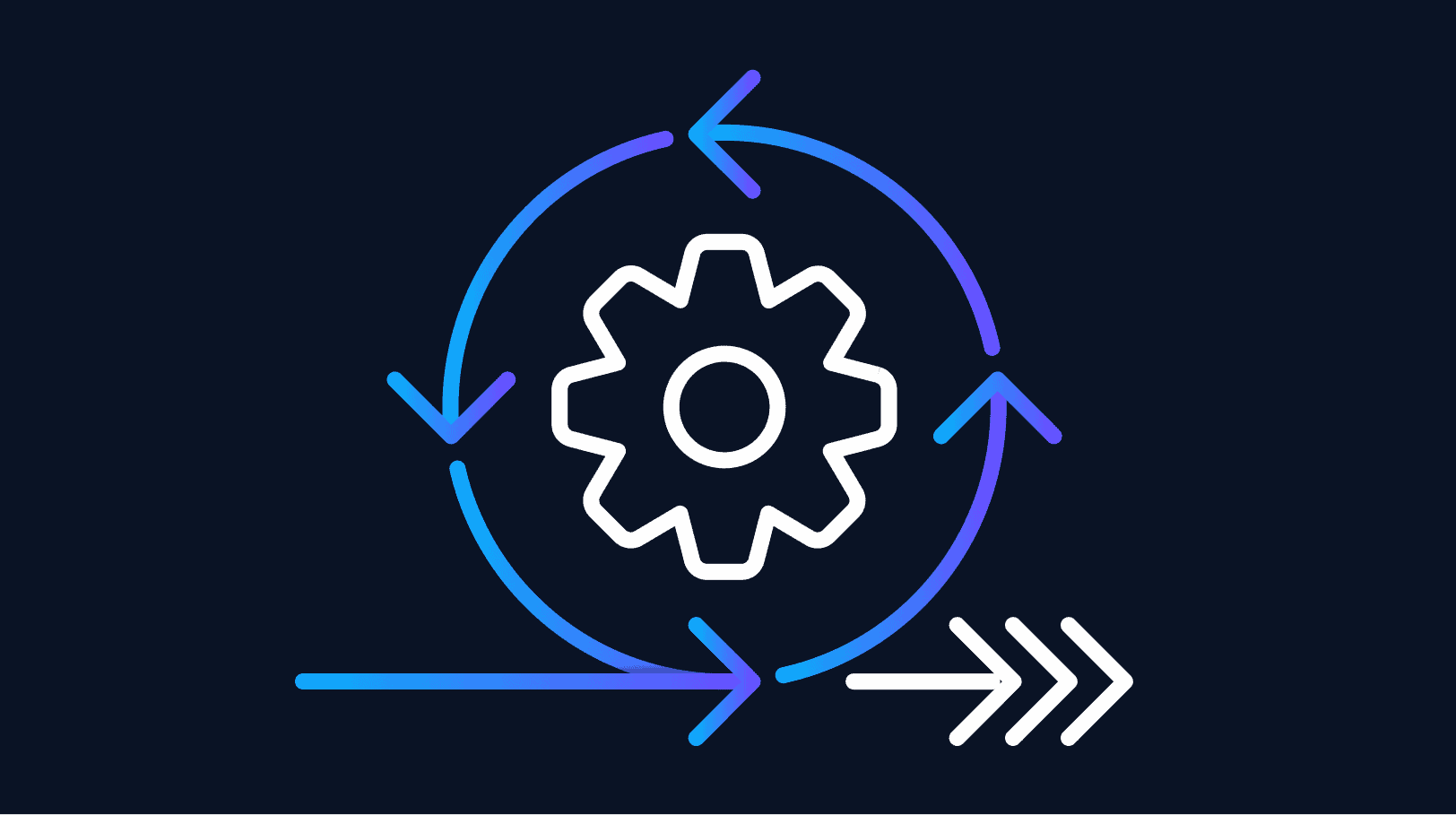
Enhanced dialogue
- Face-to-face engagement and constant communication are crucial for agile software development teams. Agile SDLC methodologies advise daily standups to make sure that everything is running smoothly and that everyone in the team is working toward the same objectives. This lessens the possibility of misunderstanding and facilitates goal achievement. Even though the Agile process demands frequent feedback, customer connection is still crucial. For example, at DeepInspire, we do weekly status calls and daily catch-up conversations with the representatives of our clients.
Process adaptation and flexibility
- Agile teams are very flexible and may quickly modify their procedures to satisfy changing objectives. This makes it possible for the Agile SDLC team to effectively and consistently manage the evolving needs of their clients.
More useful measurements
- Metrics are essential in software development for performance evaluation, management, debugging, quality control, and cost assessment. To increase team output, they may be used to identify, rank, monitor, and share any problems. Agile approaches use a variety of measures that, when compared to older processes such as the waterfall model, are more relevant and accurate. While waterfall model measurements convey project performance to the expected cost and time ratio, agile focuses on attaining outcomes and optimizing performance.
Flexible Structures
- An Agile SDLC framework is a particular method of developing software that has its roots in the Agile concept. An Agile framework is frequently called an Agile process or approach. Nevertheless, the majority of Agile teams simply use frameworks as the foundation for their Agile transformation, tailoring them to meet their requirements.
The most well-known agile development frameworks include Scrum, Adaptive Software Development (ASD), Extreme Programming (XP), Scaled Agile Framework (SAFe), Rapid Application Development (RAD), Dynamic Systems Development Method (DDSM), and a few others.
Phases of the Agile SDLC
The software development lifecycle is a series of steps that embody agility. The steps of the Agile SDLC project lifecycle in DeepInspire are as follows:
Phase One: Discovery
The Agile software development lifecycle has four phases, namely discovery, analysis, exploration, and planning. The Discovery Team gains a thorough grasp of the business objectives, requirements, and challenges of the clients through the examination of the material that is provided, discussions with all project stakeholders, and end-user interviews.
During the following stage of discovery, the product owner, project manager, business analyst, and stakeholders decide on the product’s design. They also choose the development tools, including programming languages, syntactic libraries, and frameworks, as well as the order in which functions will be introduced. Agile SDLC teams frequently create “proof of concept” solutions or even prototype the product’s user interface (UI) during the design phase.
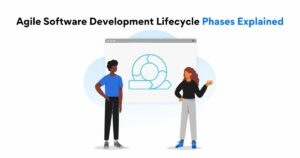
The following deliverables are the outcome of the discovery phase:
- Outlined the project’s scope and essential criteria;
- Calculated the project’s duration and expense;
- Established the product’s UI/UX idea and created preliminary wireframes and user interface designs;
- Required features, appropriate third-party solutions, proposed design and technology stack, security advice, etc.
- I drafted the project charter and product backlog, two of the most important project documents.
Four specialists are appointed to the devoted team for three weeks during the discovery phase.
Phase Two: Development
The development phase of the Agile software development lifecycle then begins, at which point the team may begin working on the project’s initial iteration. The development phase includes coding, quality assurance for each new update, architecture, and API development, and extensive UX/UI design for every screen and user flow. Each sprint that is used to deliver the product aims to improve the software’s current iteration.
Phase Three: Release
It is essential to do a pre-production release and set of tests on the staging environment, which is a replica of production, to ensure that the program is completely working. The team has completed this stage of the Agile SDLC.
- Examines the different user processes and created features;
- Corrects flaws and problems that were missed during the development stage;
- Conducts training both internally and externally and maintains documentation;
- Obtains early input from project participants.
The iteration’s final release into production is completed as a consequence.
Phase Four: Production
The program is now fully installed and accessible to users. It’s critical to monitor any faults or issues that can be overlooked at this stage of the Agile software development lifecycle and end users’ input can be a fantastic source of ideas for future enhancements.
Phase Five: Maintenance
After the product is released, there is an agile software development phase. According to Agile SDLC methodologies, the Agile team should offer ongoing assistance to resolve any problems and maintain the system’s functionality. Iterations can also be made again to add additional features to the product.
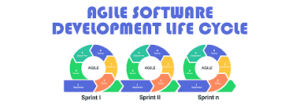
Phase Six: Retirement
In the retirement phase, the system release is taken out of service, either because you wish to replace it with a new release or because it no longer fits your business model or is redundant.
Enhancing Software Development Agility in Five Ways
The goal of the agile development cycle is to maximize team performance. The five main pillars of Agile SDLC are technology, infrastructure, automation, methodology, and architecture. These pillars drive speed and agility.
It’s critical to honestly assess your organization’s position in each area. Are you prepared to adapt to evolving business requirements? You have more chances to grow if you are not as mature in a particular area right now.
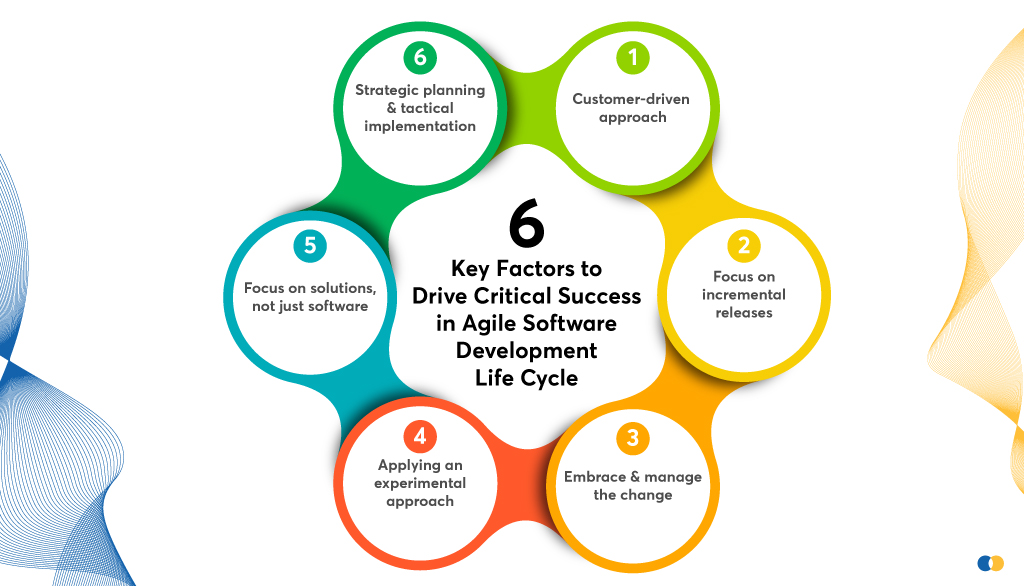
Let’s examine each of the five areas of concentration and provide some suggestions.
1. Techniques
To guarantee a speedier time to value, enhance business and IT cooperation, and enable quicker project discovery. Encouraging swift adaptation to evolving business requirements enhances velocity and flexibility across all stages.
2. Buildings
Utilizing the concepts of component-based or microservices architecture, design your solutions. Teams may build autonomous and independent systems with this design, which lessens the effects of change and increases adaptability.
3. Mechanization
Manual labor takes a lot of time and is prone to mistakes. Measure the amount of time spent on each manual operation, to begin with, then automate the work that takes the longest.
4. Infrastructure
Teams that have a flexible infrastructure are better able to adjust to ongoing change. Instant server deployment is already possible with many IaaS providers. The next stage is containerization, which can result in completely automated provisioning as well as self-service when combined with automation.
5. Technology
Agility is eventually made possible by technology. Selecting the appropriate technology for the task is essential to maximizing value. Examine your fundamental business goals as you determine your emphasis areas. Choose a tool that will enable you to accomplish your objectives with the least amount of work.
Make sure you choose a combination of technologies that will work together to help you become more agile. Select open technology that will develop with you and help you become more Agile SDLC rapidly.
What role does DevOps play?
Agile development is not a given for a business just because it uses DevOps technologies and processes. Every stage of the Agile software development process has a distinct objective, and reaching those objectives calls for a tactical strategy.
Low-code development platforms offer the space for DevOps teams to flourish and collaborate with Agile SDLC. Agile was taken into consideration when designing the Mendix low-code Platform. Furthermore, there are other methods to integrate Mendix into your current workflows:
- Link the Agile requirements suite you currently have.
- Make use of the integrated Agile toolkit.
- Activate your apps using Mendix Cloud.
In summary:
The Agile SDLC (Software Development Life Cycle) has become a revolutionary force in the rapidly changing technological world, changing the way businesses approach software development. A flexible and adaptive technique is required due to the rapid speed of technology improvements, as well as the constant changes in corporate settings and client demands. Tech businesses must be able to offer high-quality goods quickly and adjust to changing market conditions to remain competitive. The Agile software development approaches were born out of this requirement, and the DeepInspire team is proof of their efficacy.
The DeepInspire team is a staunch advocate of the Agile methodology and understands how important agility is for navigating the challenges of contemporary software development. According to the Agile Manifesto, agile is a mindset that is based on fundamental values and ideas rather than merely a collection of techniques. It offers a framework for various strategies and management techniques that support iterative development. The Agile methodology divides work into manageable sprints or iterations, each with a set number, length, and scope. Teams can go through the whole software development lifecycle within each iteration, which usually lasts one to four weeks, with an emphasis on cooperation and adaptability.
To put it briefly, the Agile SDLC has emerged as a critical component of success in the hectic field of software development. It gives teams the ability to adapt quickly to changing requirements, handle uncertainty, and provide value to consumers. The Agile concept continues to be a beacon of hope for teams looking to lead, not simply follow, in software innovation as technology advances.
FAQs:
1. Agile Software Development: What Is It?
Agile software development refers to a collection of techniques and strategies that emphasize flexibility, teamwork, and iterative development. It came into being in response to the demand for software development procedures that were more rapid and adaptable.
2. When was the inception of Agile Software Development?
When a group of software engineers formed the Agile Manifesto in 2001, agile software development had its start. The manifesto emphasizes flexibility and client cooperation while outlining the fundamental beliefs and guidelines of agile sdlc.
3. What does the Agile Manifesto entail?
The core text for agile software development is called the Agile Manifesto. It delineates twelve guiding principles and four central values that place a higher priority on people and their relationships, practical solutions, and customer cooperation than on procedures and equipment.
4. How is Agile SDLC implemented?
Iterative development, which divides work into shorter iterations or sprints, is the foundation of the agile SDLC. The average period of an iteration is one to four weeks, and its number, duration, and scope are all predetermined. Teams may provide software progressively and adjust to changing requirements using this technique.
5. For what reason does Agile matter to IT companies?
Agile is essential for IT organizations because it allows them to quickly develop high-quality products and stay competitive. It enables teams to work together productively to accomplish their objectives, adjust swiftly to changes in the market, and adjust to changing client demands.
6. What advantages come with applying the Agile methodology?
The agile technique has several advantages, such as a quicker time to market, flexibility in responding to changing needs, enhanced teamwork, and the capacity to provide clients with incremental value. It encourages software development to have a flexible and customer-focused approach.
Also Read What is Agile Methodology? Agile Development Methodology Steps in Detail

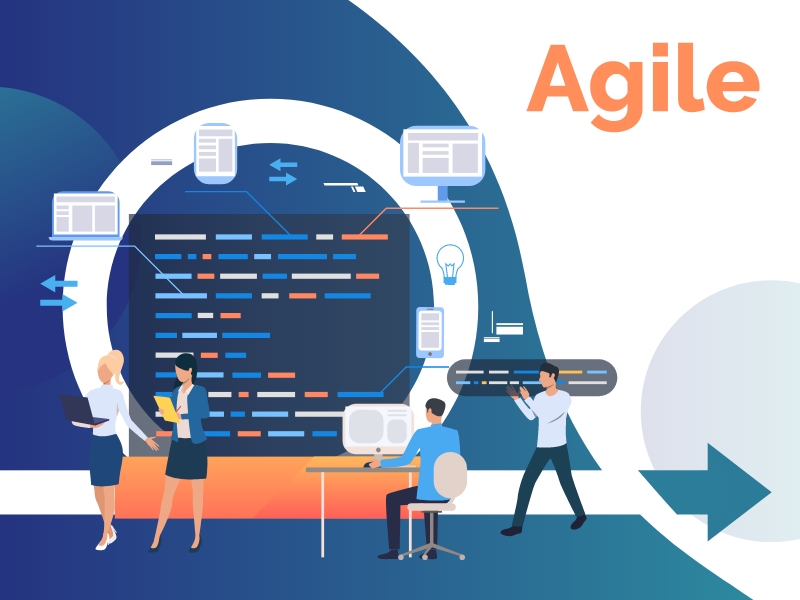








Add Comment